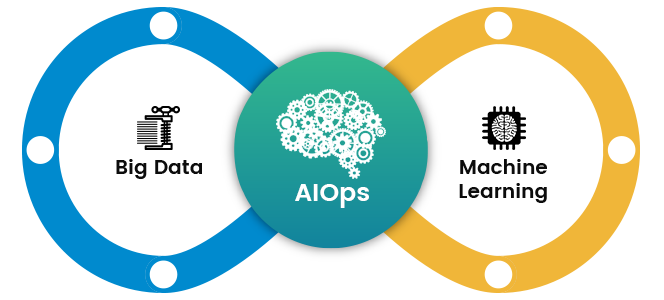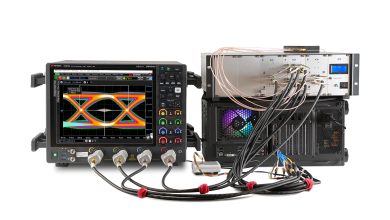Data Centre Evolution in APAC: Embracing AIOps for Smarter, Multivendor Operations
Building Infrastructure That Is Smarter, More Resilient, And Better Aligned to Business Outcomes

Increasingly, AIOps is the way to go.
Across Asia Pacific, data centres are evolving rapidly as organisations respond to growing demand for digital services, increasing adoption of Artificial Intelligence (AI), and the shift towards more distributed, data-intensive operations. What has become clear is that traditional, single-vendor architectures are no longer equipped to meet the scale, agility, or performance needs of today’s enterprises. In response, more businesses are turning to multivendor strategies and AI-powered operations to gain the flexibility and control required to stay competitive.
This shift is not just about deploying the latest technology. It is about building infrastructure that is smarter, more resilient, and better aligned to business outcomes. For channel partners, it opens new opportunities to deliver higher-value solutions, support long-term success, and play a more strategic role in guiding infrastructure transformation across the region.
With AIOps and AI-native networking, IT teams now have a clear path to simplify complexity, improve performance, and future-proof their environments in measurable, scalable, and sustainable ways.
The Transformative Role of AIOps and Multivendor Data Centres
Data centres continue to serve as the backbone of the region’s digital economy, supporting everything from public cloud platforms to advanced AI workloads. As demand grows and environments become more distributed, agility has become essential. The era of one-size-fits-all infrastructure is behind us. Organisations increasingly prefer multivendor architectures that allow them to integrate best-of-breed solutions, optimise performance, and avoid the limitations of vendor lock-in.
Alongside this architectural shift, AIOps has emerged as a key enabler of operational efficiency. By applying machine learning and automation to infrastructure management, AIOps provides the visibility, speed, and insight that conventional tools lack. Its value increases in multivendor environment by connecting systems, eliminating silos, and creating a unified layer of intelligence across the data centre. This is particularly important in Asia Pacific, where environments are often hybrid, complex, and scaling fast.
Opportunities for Channel Partners in Data Centre Optimisation
Across the region, more organisations are rethinking how they design and operate their data centres. While the move toward multivendor, AI-native infrastructure offers significant upside, they can also introduce complexity, especially when systems span cloud, on-premises, and edge environments. Many organisations are looking for guidance on how to make that transition without disrupting operations or compromising security.
This is where strong partnerships and proven frameworks come into play. In Singapore, KDDI Asia Pacific worked with James Cook University to rebuild its network using Mist AI, enabling a high-performance hybrid learning environment while reducing operational burden. In Australia, Sparx Solutions helped Online Education Services deploy an AI-driven platform that allowed them to scale securely and efficiently amid surging digital learning demand. And in Singapore’s healthcare sector, TAK Systems supported St Luke’s ElderCare in rolling out a full-stack AI-native network across more than 30 locations, automating processes, enhancing data protection, and supporting IoT-enabled care delivery.
These examples demonstrate how enterprises across Asia Pacific are turning complexity into a competitive advantage. By modernising their data centres with solutions tailored to their needs, they are building environments that are, scalable, secure, and future-ready.
Key Benefits of Embracing the Shift
Organisations that embrace multivendor, AIOps-driven solutions are seeing measurable gains across performance, cost, and resilience. They’re able to run more efficiently, adapt faster to business demands, and significantly reduce the operational overhead tied to legacy systems. Crucially, they’re also better positioned to manage the performance and security needs of AI and cloud-native workloads, which is something that’s becoming a baseline requirement in sectors from finance to education.
Energy and sustainability are also part of the equation. With rising ESG expectations across Asia Pacific, AI-native optimisation offers a practical way to lower energy consumption without compromising performance. Smarter resource allocation, automated scaling, and reduced hardware sprawl all contribute to greener, more cost-effective data centre operations. These capabilities matter not only to IT leaders, but also to boards and regulators.
The Competitive Advantage in the Channel
As digital infrastructure becomes more central to business strategy, organisations across Asia Pacific are prioritising solutions that offer more than just short-term performance. They want greater flexibility, tighter control, and the ability to evolve without rebuilding from scratch. Multivendor architectures and AI-powered operations help deliver on all three.
By investing in infrastructure that’s open, intelligent, and built to scale, businesses can respond faster to change, simplify operations, and manage growth more sustainably. In a region where the pace of transformation is not slowing down, that kind of agility will be a clear differentiator.




